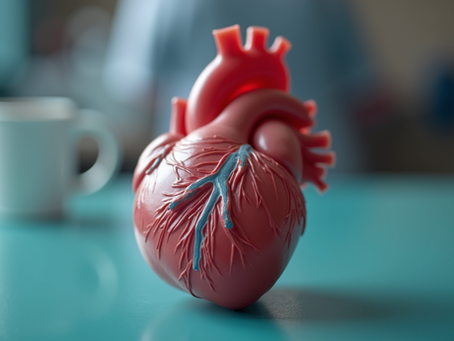Transforming Heart Health: The Revolutionary Impact of TAVI, TAVR, and MitraClip
- Dr. Srinivasa Prasad B V
- Jul 18, 2024
- 2 min read
The Future of Heart Valve Treatments is Here

In the realm of cardiology, innovative procedures like Transcatheter Aortic Valve Implantation (TAVI), Transcatheter Aortic Valve Replacement (TAVR), and MitraClip are revolutionizing the treatment of severe heart conditions. These minimally invasive techniques offer hope to patients who previously had limited options, ensuring a better quality of life and improved survival rates.
"With TAVI, TAVR, and MitraClip, we're witnessing a paradigm shift in cardiac care, providing life-saving solutions without the need for open-heart surgery."
Understanding TAVI / TAVR: A Leap Forward in Cardiac Care
TAVI / TAVR are advanced procedures designed to treat aortic stenosis, a condition characterized by the narrowing of the aortic valve opening, which restricts blood flow from the heart to the rest of the body. These procedures involve the placement of a new valve via a catheter, typically inserted through the femoral artery, eliminating the need for traditional open-heart surgery.
Benefits of TAVI and TAVR:
Minimally Invasive: Reduced risk and faster recovery compared to open-heart surgery.
Shorter Hospital Stays: Most patients return home within a few days.
Improved Quality of Life: Significant symptom relief and increased life expectancy.
"TAVI / TAVR are game-changers for patients with severe aortic stenosis, offering a safer alternative with remarkable outcomes."
MitraClip: A Breakthrough for Mitral Valve Regurgitation
MitraClip is an innovative treatment for mitral valve regurgitation, where the mitral valve does not close tightly, allowing blood to flow backward into the heart. The MitraClip device is delivered via a catheter to clip the leaflets of the mitral valve together, thus improving valve closure and heart function.
Benefits of MitraClip:
Non-Surgical: Performed through a minimally invasive catheter-based procedure.
Rapid Recovery: Most patients experience significant improvement shortly after the procedure.
Enhanced Heart Function: Alleviates symptoms of heart failure and reduces hospitalization rates.
"MitraClip offers a lifeline to patients suffering from mitral valve regurgitation, with transformative effects on heart health and overall well-being."
Why Choose Minimally Invasive Heart Valve Procedures?
Choosing TAVI, TAVR, or MitraClip can significantly enhance your treatment experience and outcomes. These procedures are designed for patients who are at high risk for traditional surgery or who seek a less invasive option with fewer complications and a quicker return to daily activities.
Patient Testimonials: Real Stories, Real Results
Mr. J, a 75-year-old retired teacher, shares his experience:
"After my TAVR procedure, I felt like a new person. The chest pain and breathlessness that plagued me for years disappeared, and I was back to enjoying life within days."
Mrs. SN, a 73-year-old grandmother, says:
"The MitraClip procedure gave me my life back. I can play with my grandchildren without feeling exhausted or short of breath."
Contact Us: Your Heart Health is Our Priority
If you or a loved one are suffering from severe aortic stenosis or mitral valve regurgitation, don't wait. Discover how TAVI, TAVR, and MitraClip can transform your heart health and quality of life.
Contact our specialist team today:
Phone: 973 973 77 55
Location: 180, Ground Floor, 16th Main, Jayanagar 4th T Block, Bangalore - 560041
"Transforming lives, one heartbeat at a time with TAVI, TAVR, and MitraClip."
By choosing our advanced cardiac care solutions, you are opting for state-of-the-art treatment that prioritizes your well-being and long-term health. Reach out now and take the first step towards a healthier heart.




























Comments